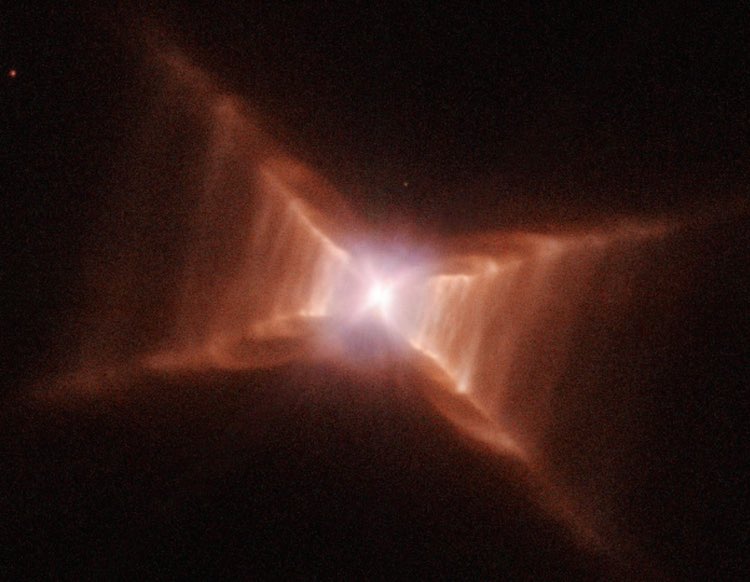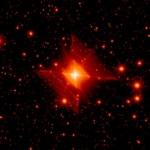
Stars are some of the most ubiquitous and wondrous celestial bodies we see when looking up at the night sky. Those round pinpoints of light appear far more interesting when viewed through powerful telescopes such as those available at observatories. In fact, sometimes they don’t appear round at all. Scientists recently stumbled upon a star formation that was perfectly square.
Square? They described it as a hidden jewel, appearing like a ruby, and have dubbed it the “Red Square.”

Peter Tuthill from the University of Sydney leads the team that discovered the formation. A few other nebulas, strangely shaped formations of gas or material around stars, have been found to be similar, but the high degree of symmetry of the Red Square is particularly astonishing.
“If you fold things across the principal diagonal axis, you get an almost perfect reflection symmetry, making the red square nebula the most symmetrical object of comparable complexity ever imaged.” said Tuthill. “Discoveries as beautiful as this one don’t come around very often and it took some of the world’s most advanced telescopes, together with a good dose of luck, to find this jewel hidden among the myriad stars in the galaxy.”
One of the stars is losing matter which is then held in a dense disc by the combined gravity of the two stars. Light and material can only escape from the poles of the disc by being blown by the stellar wind of the central star. This gives the appearance of two cones that are touching at their tips creating a bipolar nebula and the square shape. Its name implies a relation to its close cousin, the “Red Rectangle Nebula.”
Another interesting feature is the radial spokes pointing away from the center which is rarely seen in nebulae. These may be related to periodic ripples on the surface of an inner disk of material close to the central star.
Acquiring images of such clarity is due to the use of new imaging technology called adaptive optics which keeps objects in focus like a pair of glasses does for myopic vision. The technology makes use of a mirror capable of being deformed in order to adjust its focal point in order to correct distortions introduced by the Earth’s atmosphere.
“A system as complex and fascinating as this is bound to keep us guessing for years to come,” exclaimed Tuthill.
Michael Little is an analytical chemist currently working at a research centre for an international pharmaceutical company. Originally from Nova Scotia, Michael now resides in Laval, Quebec with his wife and two children. Michael joined the GNN-i team as a science writer in May 2007.




















MAybe it’s the Allspark…